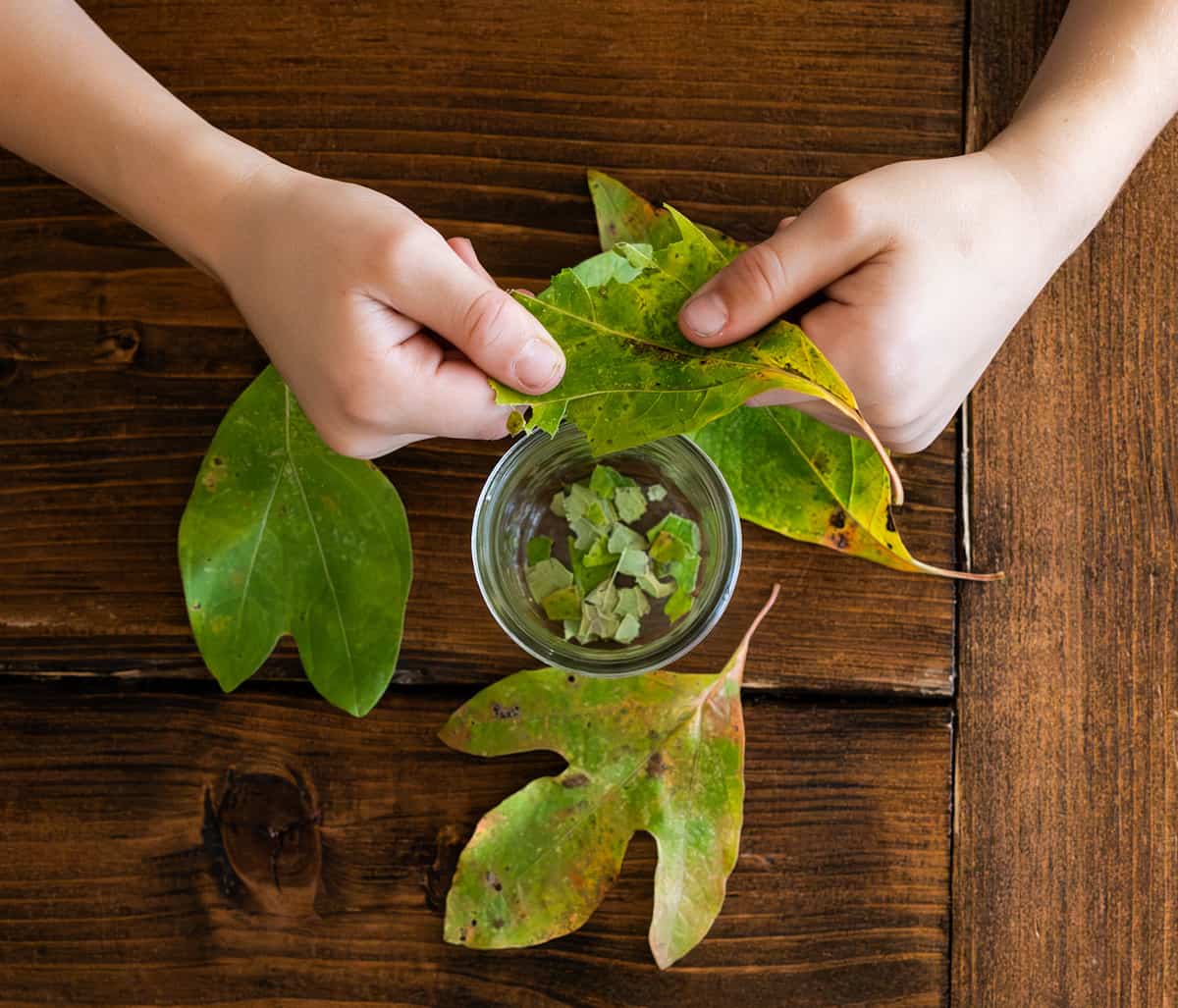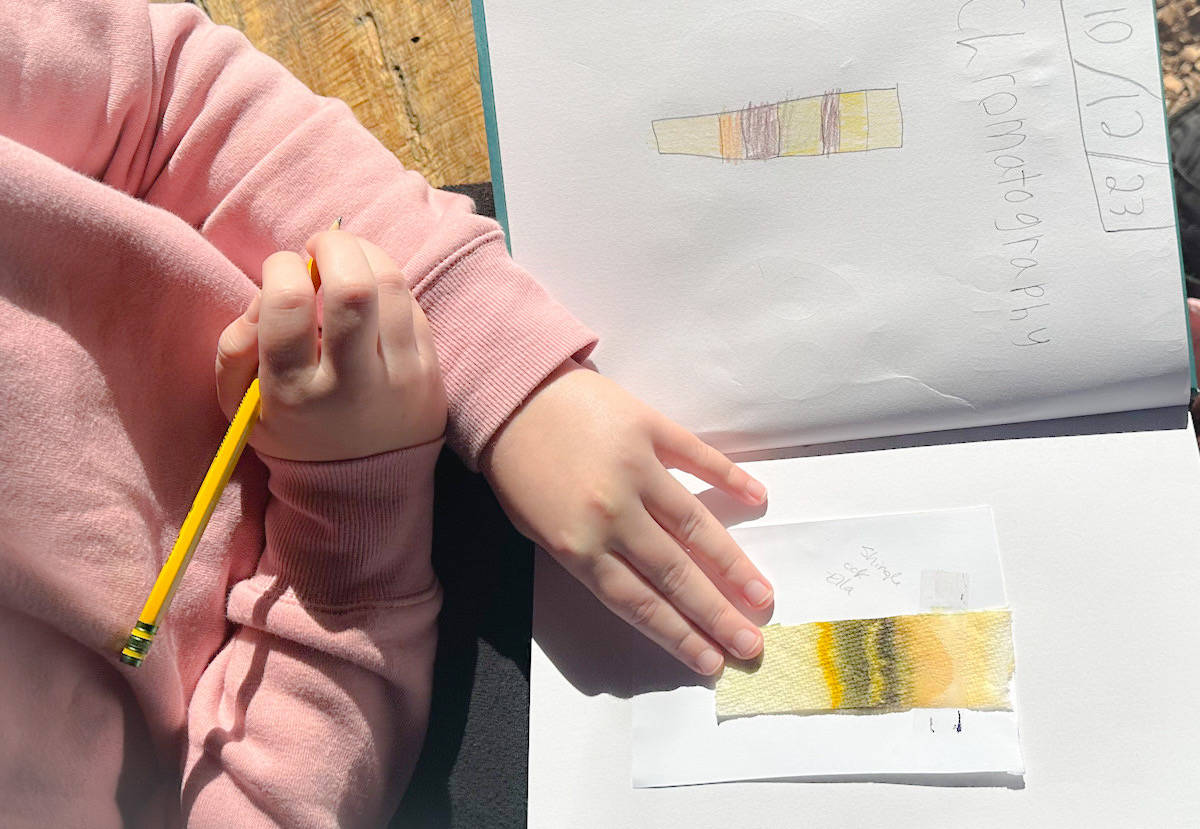Autumn is best known for its gorgeous color palette. Deciduous trees in more temperate climates respond to autumn’s cooler temperatures and shorter daylight hours by changing their leaf colors and dropping their leaves to the ground. In fact, the word deciduous is from Latin and literally means “fall down.” A rainbow of purples, reds, yellows, oranges, and browns take over where shades of green once dominated. But, what causes this transformation? Today, Laura Stroup, founder of Firefly Nature School and School of the Wild, explains how to reveal the assorted color pigments found within the fluttering leaves of fall trees.
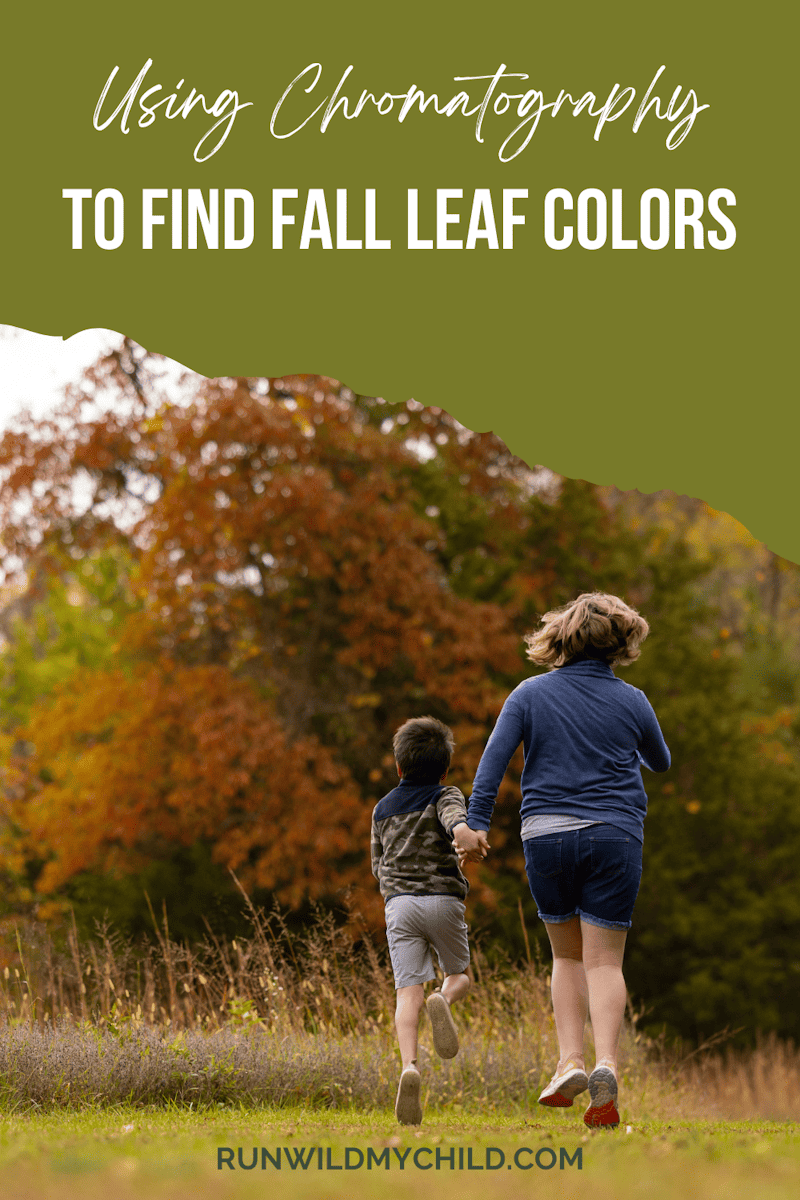
Exploring the beauty of the season
As the crisp breeze of autumn transforms the landscape, it brings a spectacular display of vibrant hues adorning the trees. For curious young minds, fall leaves hold more than just seasonal beauty. They conceal a secret world of hidden colors waiting to be discovered.
Today, we invite young scientists (and their parents) to embark on an exciting journey of exploration through the captivating realm of chromatography, unlocking the mysteries of nature’s palette right from the comfort of home. Join us as we delve into the fascinating world of chromatography and guide young enthusiasts through a simple and engaging experiment. Unleash your inner scientist, and let the colors of fall leaves tell their unique tales of nature’s artistry!
What is chromatography?
Chromatography is a technique used to separate and identify components within a mixture. In the context of fall leaves and their vivid hues, chromatography acts as a scientific detective, revealing the hidden pigments responsible for the kaleidoscope of colors in fall leaves.
This process capitalizes on the principle that different substances in a mixture travel at different rates through a medium, such as paper or a chromatography strip. As a solvent moves through the paper, it carries the pigments along, causing them to separate based on their unique chemical properties. By examining the distinct patterns left behind, scientists can unravel the composition of complex mixtures, offering a valuable tool not only for understanding the science of colors in nature but also for applications ranging from forensics to pharmaceuticals.
By understanding the science behind chromatography, kids can do hands-on experiments (like the one we’re sharing below!) that not only reveal the hidden pigments in leaves but also fosters a deeper appreciation for the wonders of the natural world. Are you ready?
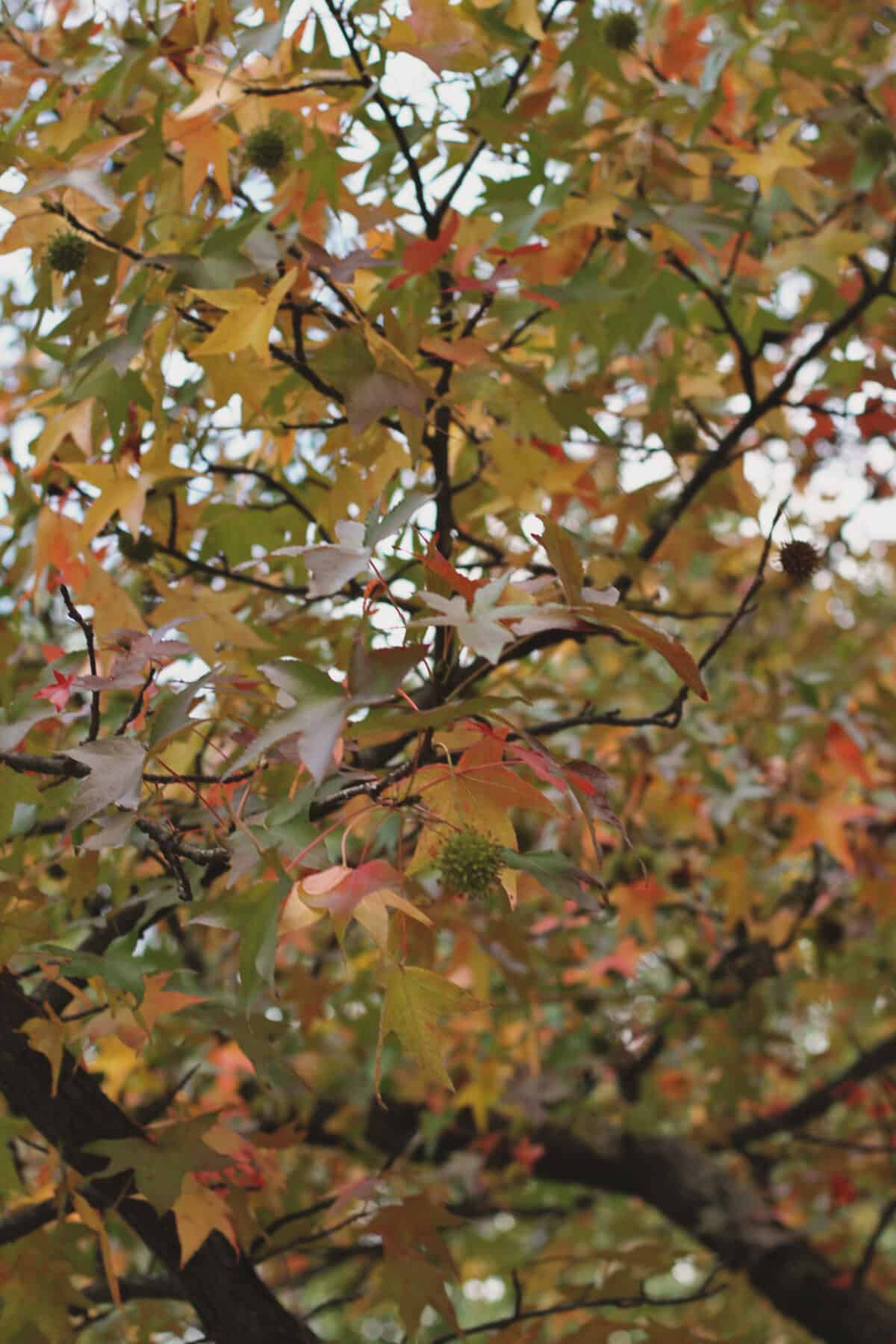
How do trees prepare for winter?
Like the people and animals around them, deciduous trees prepare themselves for winter. Each fall, deciduous trees undergo a fascinating transformation to prepare for the challenges of the colder months. As part of nature’s strategic planning, deciduous trees meticulously withdraw energy from their leaves, the very organs that had been the source of their lush greenery throughout spring and summer.
As the days grow shorter, leaves lose more chlorophyll. You probably know chlorophyll as the green pigment that helps leaves absorb the sunlight they need for photosynthesis. As the remaining chlorophyll breaks down inside the leaves, other hidden colors are revealed. Cold weather early in autumn and/or dry conditions over the summer months may make for less than spectacular shows of color and early leaf drop.
This withdrawal is facilitated by the formation of an abscission layer, a specialized zone that develops at the base of each leaf’s stem. As daylight wanes and temperatures drop, the tree recognizes these cues and triggers the production of a hormone called abscisic acid. This hormone signals the cells in the abscission layer to expand, effectively sealing off the connection between the leaf and the tree. The once-nurturing relationship comes to an end, and the leaf is left to gracefully fall to the ground.
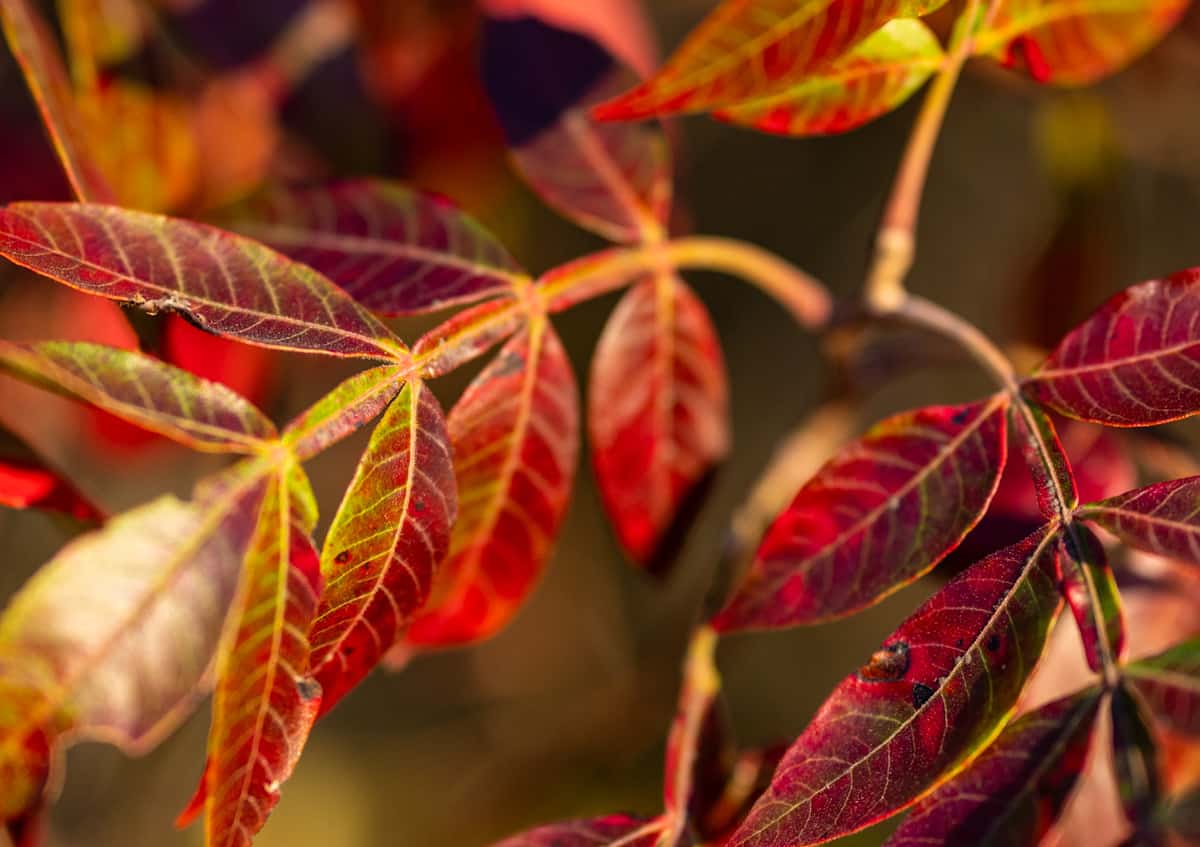
What colors are in the leaves?
Leaves are green from chlorophyll, but they also contain lesser-known pigments like brown tannins, yellow xanthophylls, and gold and orange carotenoids. What makes the ravishing red and purple shades like those of the red maple, pin oak, and sweetgum?
Anthocyanins, in combination with what remains of the chlorophyll, are responsible for those beauties. The anthocyanins are created as the leaves make sugars during fall’s warm sunny days. As night falls and the temperatures cool, the sugars are changed to red and purple pigments.
Conduct your own chromatography experiment
You can solve a chem-mystery to figure out what colors a particular tree is hiding in its leaves. For this activity, we will focus on gathering a variety of leaves from different tree species and using the chemistry of chromatography to reveal the hues normally covered by chlorophyll for most of the year.
Begin by taking a nature walk, noticing the colors, and collecting leaves from different trees. We like to do this experiment with green leaves, but you can use leaves of other colors. It’s best to pick leaves from trees that are on your own property or leaves that you have permission to pick.
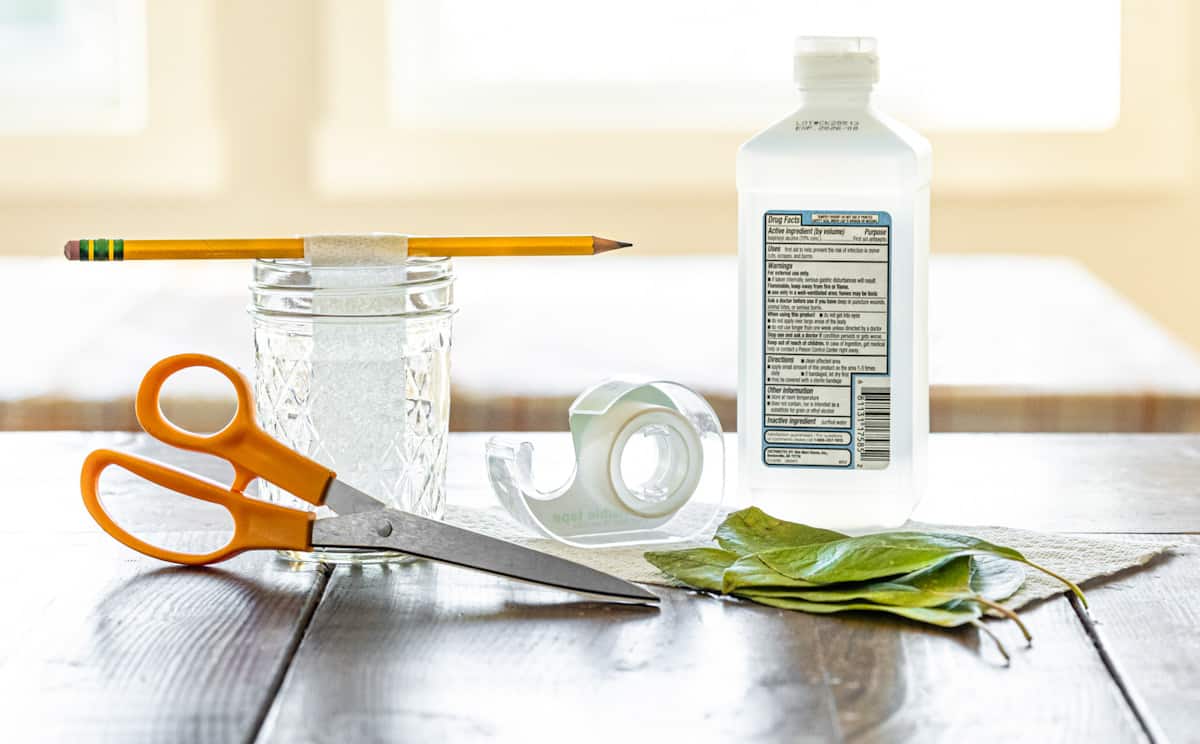
Chromatography supplies
Paper chromatography is how you will separate the different colors in the leaves you gather by using a solvent (in this case, isopropyl alcohol) and a paper strip. Remember, most leaves have a few different colors hiding in them, even if you see only one color.
For this activity, you will need:
- A variety of leaves – keep track of the species
- Isopropyl alcohol
- Glass jars (the number of jars depends on how many leaf species you collect)
- Pencils
- Tape
- Scissors
- Coffee filter or absorbent paper towel
Breaking down the leaves
You will need to make a mixture with the leaves. Choose one species of leaf, and select your method of breaking your leaves into small pieces. You can use your hands to tear them, a mortar and pestle to grind them, scissors to cut them, or a blender or food processor to mulch them into tiny pieces (the latter being my kids’ favorite option).
The goal is to have enough leaf pieces to cover the bottom of your jar.
Put your leaf pieces into the bottom of a glass jar. Pour enough isopropyl alcohol into the jar to cover the leaves. Slowly swish the jar around to mix up the solution. The leaves will break down a bit, so their color molecules will mix in with the alcohol. Making sure the pieces are tiny helps this process along.
Revealing the colors
Let the jar with leaf bits and alcohol rest while you make your filter strips. Cut a one-inch wide strip through the length of a coffee filter or the width of a rectangle of paper towel. Roll the end of the strip around a pencil, and rest the pencil across the top of the jar. The dangling end of the strip should be just barely dipped into the leaf/alcohol mixture.
Once you have your setup complete, leave the jars for several hours. The different color pigments in the solution that you made will take different amounts of time to “crawl” up the filter paper due to the different molecules found in each. This results in the colors separating out into visible stripes in different locations along the length of the paper.
Reading your results and extending the lesson
As young scientists dip these leaves into a solvent during the chromatography experiment, they witness the mesmerizing separation of pigments on the chromatography paper. The resulting patterns are akin to a colorful fingerprint, revealing the distinct chemical makeup of each leaf.
Check your filter strips to see what color pigments are in your leaves. Did you find anything that surprised you? You may have found several shades of greens, oranges, browns, or yellows.
To translate this scientific exploration into a prediction for fall colors, kids can carefully observe and record the patterns obtained from the chromatography experiment. By noting the number, intensity, and positions of the separated pigments, they create a chromatographic profile for each type of leaf.
If you do this experiment in the summer or early fall BEFORE the leaves change colors, kids can make connections between these profiles and the forthcoming fall foliage. As fall approaches and the leaves begin to change color, children can revisit their chromatographic findings and correlate the presence of specific pigments with the colors they observe in the leaves outside.
For instance, if a particular pigment in the chromatography experiment corresponds to a rich red hue, spotting that pigment in the chromatographic profile could indicate a likelihood of red leaves appearing on the trees during autumn. This analytical approach transforms the chromatography experiment into a predictive tool, empowering kids to anticipate and appreciate the kaleidoscope of fall colors based on the unique chemical signatures unveiled in their chromatographic investigations.
Get outside and enjoy the season
Be sure to get outside and take an autumn nature walk to enjoy nature’s colors. Take photos of trees that catch your eye, or draw them in your nature journal. You can even save the leaves themselves and press them to dry them out. This allows you to store the leaves without them crumbling to pieces.
Here are a few additional fun fall posts you might be interested in:
- Fall leaves and nature crafts
- Must take fall photos
- Fall and winter books for kids
- Favorite fall recipes for families
- 100 outdoor fall activities for kids
Which fall colors are the most prevalent in your region?
Which shades are your favorites?

About the author
Laura is an ecology writer and the founder of Firefly Nature School, a nature study curriculum designed for homeschooling families, co-ops, and classrooms. Laura has a Bachelor of Science degree in Animal Ecology from Iowa State University with an emphasis in natural resource education. A former wildlife conservation educator and upper school science teacher, she now directs School of the Wild, a local nature school serving her community. In her free time, she enjoys traveling with her family, hiking, running, writing, reading, and cooking. Laura lives with her husband and their three children in the beautiful Ozarks countryside.
Find more from Laura in the following locations:
Website: Firefly Nature School
Instagram: @fireflynatureschool
Facebook: Firefly Nature School
RWMC posts: Laura Stroup

